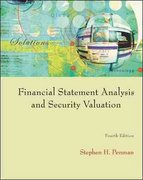Melissa Parker is considering the merits of buying a small caf in Adelaide. The caf is fully furnished and equipped. The business has been operating for the last 3 years. The caf premises are not owned, but leased. The current lease expires in two years, but there are options for a further five-year term in place. The current lease costs $30,000 per annum in rent. The current owner, Philip Taylor, started the business in 2017 with a capital of $75,000. He is asking for a price of $100,000 for the business. Philip provided the following information: Table 1: Information for the year ended June 30, 2020 Sales revenue Cost of sales Gross profit Other expenses Loss Upon a request from Melissa, Philip provided the following information about the 'other expenses' of $277,000 from the records of the business: Table 2: Information about 'other expenses' Coffee machine 100,000 Insurance 6,000 Computers & software 15,000 Telephone usage 4,000 Car maintenance expense 8,000 Interest paid to Bank 2,000 Furniture 50,000 Shop cleaning 10,000 Servicing of coffee machine 8,000 Internet 2,000 Electricity 10,000 Water bill 7,000 Advertising & memberships 25,000 Lease rent 30,000 Total $ 277,000 In addition, Philip informed the following: The business took a bank loan of $50,000, which is repayable in 2024. Accounts payable and cash balance as at June 30, 2020 are $5,000 and $31,500 respectively. The owner takes out $500 every week from the business. All sales are cash sales. Following detailed discussions with Philip, Melissa discovered that: . No attempt has been made to segregate personal and business expenses. Electricity, water and car maintenance were estimated to be 80% business and 20% owner's personal purposes. The "coffee machine', 'computers & software" and 'furniture' were bought on July 1, 2019 and estimated to have a useful life of 5 years each. Tax rate of 30% Questions 1. Explain why not separating the figures into those relating to personal or business aspects may cause problems for decision-making. 2. Prepare a Statement of Financial Performance and Statement of Financial Position for the year ended June 30, 2020 and as at June 30, 2020 respectively. 3. Melissa expects a 25% return on investment (return on equity) from this business. Would the business be able to generate this rate of return? 4. What other factors (financial and non-financial) might be worth considering by Melissa in reaching a final decision








